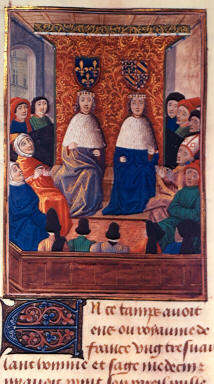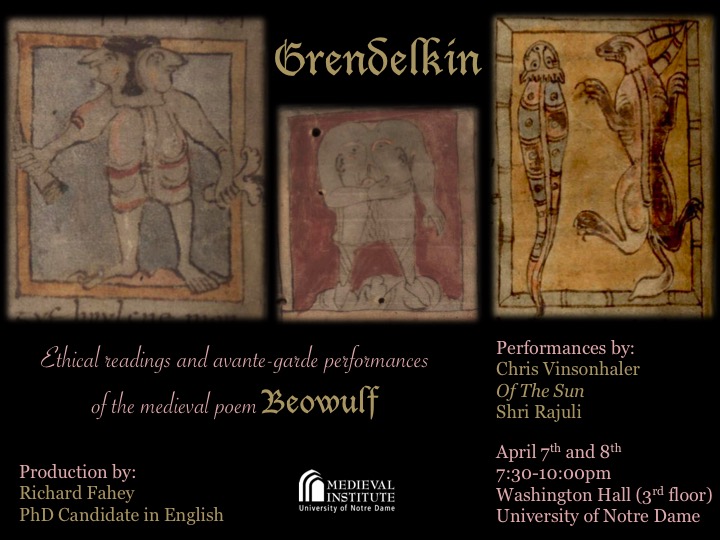Jean Gerson was perhaps the most influential religious figure in the fifteenth century, reaching nearly all Western Christendom through his preaching, his teaching, and especially his promulgation of his works to an eager body of readers and listeners. Modern scholars of Gerson have shown how widespread the writings of the French prelate were, reflecting a long-standing scholarly consensus that Gerson spoke, intentionally so, to the minds and hearts of the non-elites of the late medieval West. Gerson’s effectiveness as a religious communicator cannot be denied, yet such a conception strangely still understates his work’s reach and efficacy. Examining the surviving manuscripts in the ducal library of the Dukes of Burgundy, we see that Gerson’s works resonated even with those who personally despised the man.
Gerson had a complicated relationship with the Burgundian Dukes. He first made their acquaintance by helping to expel Duke Philip the Bold’s agents at the French court during the Immaculate Conception controversy in 1388. Gerson’s actions led directly to a loss of Burgundian power in France, a loss which Duke Philip spent much of the 1390s trying to recoup. Philip did not punish Gerson for his past transgressions against Burgundian interests. Instead, Gerson’s part in the Immaculate Conception controversy convinced Philip that he needed this talented theologian in his own camp. The duke offered the lucrative position of dean of St. Donatien’s in Bruges to Gerson, hoping the bountiful benefice would entice the theologian to his party. Gerson accepted the position and went to Bruges in 1399. Installing Gerson in Bruges was a coup for the Burgundians: it removed the most talented of the French theologians from the University of Paris, and it ensnared Gerson within the economic web of Duke Philip. Philip undoubtedly hoped his financial offerings would persuade Gerson to permanently abandon French interests for those of Burgundy.

Gerson’s working relationship with Burgundy changed after the death of Philip the Bold in 1404. The new duke, John the Fearless, despised Gerson. Duke John lacked his father’s willingness to forgive Gerson for his actions against the Burgundians in the 1380s. Near the time of his ascendancy to dukedom, Duke John removed the Saint Donatien ecclesiastical benefice from Gerson’s possession, citing the canons’ dissatisfaction with Gerson’s methods of governing the church. Historians are unclear as to the root cause behind Duke John’s personal animus toward Gerson, suggesting that the duke viewed Gerson as a French loyalist and thus an obstacle to John’s own ambition at the French court. The tension between the two men reached its apex when Gerson personally sought a condemnation of Duke John by the Council of Constance in 1414 for the assassination of his political rival Louis d’Orleans. The council was a gathering of all the most powerful churchmen in the West, and a public condemnation would have been a devastatingly blow to Burgundian political standing in France. Gerson failed in this venture in Constance, ultimately succumbing to the Burgundian delegation at the council. Nevertheless, by 1414, Gerson’s name had become anathema in Burgundian circles, particularly at the Burgundian court.
What is especially striking is that it was at exactly this moment at the height of the Burgundian and Gersonian feud that the works of Gerson entered the Burgundian court through the patronage of the ducal family. A member of the ducal household commissioned a manuscript of Gerson’s Opus Tripartitum around the year 1410 (Koninklijke Bibliotheek van België MS 11133-35). The Opus was a collection of three small treatises addressing the Ten Commandments (De praeceptis Decalogi), confession (De confessione), and death (de arte moriendi). The Opus Tripartitum was a short work, meant to serve as a practical guide to laypeople and less-educated priests on proper methods for handling these weighty religious issues. The treatise was an international best-seller, gaining even more popularity with the advent of printing and becoming one of the most widely published religious works in the fifteenth century. It enjoyed sixteen printings in the fifteenth century, with versions published in Latin, Spanish, Swedish, German, and Flemish.

So, why did the Burgundian ducal family want a copy of the Opus Tripartitum, a piece crafted by one of the household’s most prominent enemies? If they solely sought thorough theological instruction on the contents of the Opus Tripartitum, there were many such other works readily available to them, such as the Guido of Monte Rochen’s Manipulus Curatorum. If the ducal family sought personal religious instruction, they had their own bevy of Parisian-trained theologians to personally oversee their religious lives. Their choice of Gerson’s Opus Tripartitum indicates that the dukes were not seeking sophisticated explanations of these weighty theological concepts. They instead wanted clear, concise instruction on how to approach issues that weighed on the mind of any conscientious Christian at the time. That the dukes of Burgundy patronized Gerson’s Opus in the early years of the fifteenth century, a period characterized by fraught relationships between the Burgundians and the French (and by extension between the Burgundians and Jean Gerson) speaks to the overwhelming efficacy of Gerson’s work.
As the fifteenth century waned, the popularity of Gerson’s writings waxed at the Burgundian court. By the death of the last Valois Duke Charles the Bold in 1476, the dukes possessed at least five manuscripts by Gerson, and most likely had more. Of the surviving ducal library housed in the Royal Library of Belgium (Koninklijke Bibliotheek van België), Gerson authored the largest number of manuscripts in the dukes’ theological holdings. Despite their political rivalry with the cleric, the Dukes recognized the efficacy of Gerson’s writings, and they put political prejudice aside for their own spiritual instruction. His work was simply the best at what it did. Even his enemies would have been remiss to ignore it.
Sean Sapp
Ph.D. Candidate
Further Reading:
Bernard Guenée, Between Church and State: The Lives of Four French Prelates in the Late Middle Ages trans. Arthur Goldhammer (Chicago: University of Chicago Press, 1991).
Bernard Guenée, Un Meurtre, Une Société: L’assassinat du Duc d’Orleans 23 Novembre 1407 (Paris: Gaillimard, 1992).
E. Steenberghe, Gerson A Bruges Revue d’Histoire Ecclésiastique 31, no. 1 (1935): 5-51.



